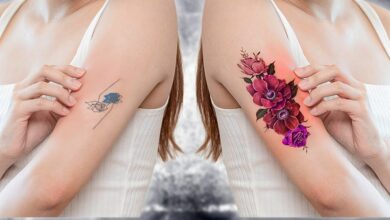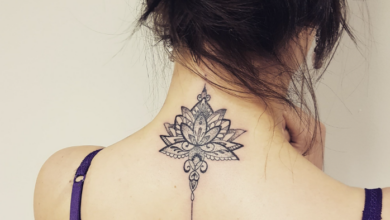
In this article, we will explore the intricate world of tattoos, uncovering the layers that lie beneath the surface. Delving into the artistry and symbolism behind these inked masterpieces, we will peel back the layers to reveal the anatomy of a tattoo. From the initial design and the buzzing of the needle, to the impact it has on one’s personal identity, join us on this journey to better understand the art that adorns our skin. So, grab a seat and let’s explore the captivating world of tattoos, one layer at a time.

The Art of Tattooing
Tattooing is a centuries-old art form that has evolved over time to become a popular mode of self-expression. From ancient tribal rituals to modern-day body art, tattoos have played a significant role in various cultures around the world. Understanding the history, evolution of styles, and the role of tattoo artists is essential in appreciating this unique art form.
A Brief History of Tattooing
The origins of tattooing can be traced back thousands of years, with evidence of tattooed mummies dating back to ancient Egypt. In many ancient civilizations, including the Polynesians, Aztecs, and Maoris, tattoos held deep cultural and spiritual significance. They were used to mark important life events, signify social status, or serve as a form of tribal identification.
Evolution of Tattoo Styles
Over the years, tattoo styles have undergone significant transformations, reflecting changing cultural and artistic trends. Traditional tattoos, characterized by bold outlines and limited color palettes, were popularized by sailors in the 18th and 19th centuries. The 20th century witnessed the emergence of new styles such as realism, watercolor, and tribal, allowing individuals to choose from a wide range of artistic expressions.

The Role of Tattoo Artists
Tattoo artists are the driving force behind the art of tattooing. They possess a unique skill set that combines artistic talent, technical proficiency, and creativity. These professionals work closely with individuals to design and create custom tattoos that reflect their personal stories, beliefs, and passions. Furthermore, tattoo artists often act as trusted advisors, offering guidance on placement, size, and color choices to ensure the best possible outcome.
Human Skin and Tattooing
Understanding the composition of human skin and how it reacts to tattooing is crucial for both tattoo artists and those considering getting a tattoo.
Composition of Human Skin
Human skin is composed of three primary layers: the epidermis, dermis, and subcutaneous tissue. The epidermis, the outermost layer, provides a protective barrier against the external environment. Beneath the epidermis lies the dermis, which contains blood vessels, hair follicles, and sweat glands. The subcutaneous tissue, the deepest layer, is primarily responsible for insulation and energy storage.
How Skin Reacts to Tattooing
When a tattoo needle punctures the skin, it creates thousands of tiny wounds that the body perceives as an injury. As a response, the immune system kicks into gear, sending white blood cells to the site to remove any foreign substances. Simultaneously, the wound-healing process begins, leading to the formation of scar tissue. This scar tissue traps the tattoo ink within the dermis, giving tattoos their permanence.
Tattoo Needles and Machines
Tattoo needles and machines are essential tools in the tattooing process, allowing artists to create intricate and precise designs on the skin.
Types of Tattoo Needles
Tattoo needles come in various configurations and sizes, each designed to achieve different effects. Round liner needles are used for creating clean and smooth outlines, while round shading needles are suitable for shading and coloring larger areas. Magnum needles, on the other hand, are ideal for filling in color and creating soft gradients.
Tattoo Machines and Their Components
Tattoo machines, also known as tattoo guns, consist of several components that work together to drive the needle into the skin. These components include the power supply, the machine frame, the needle tube, and the motor. The power supply controls the speed and depth at which the needle penetrates the skin, while the machine frame provides stability and houses the needle.
Choosing the Right Needle and Machine
Selecting the appropriate needle and machine for a tattoo is essential to achieve the desired outcome. Factors to consider include the size and complexity of the design, the client’s pain tolerance, and the artist’s personal preferences. Experienced tattoo artists often have a vast range of needle configurations and machines in their arsenal, allowing them to cater to different client needs effectively.
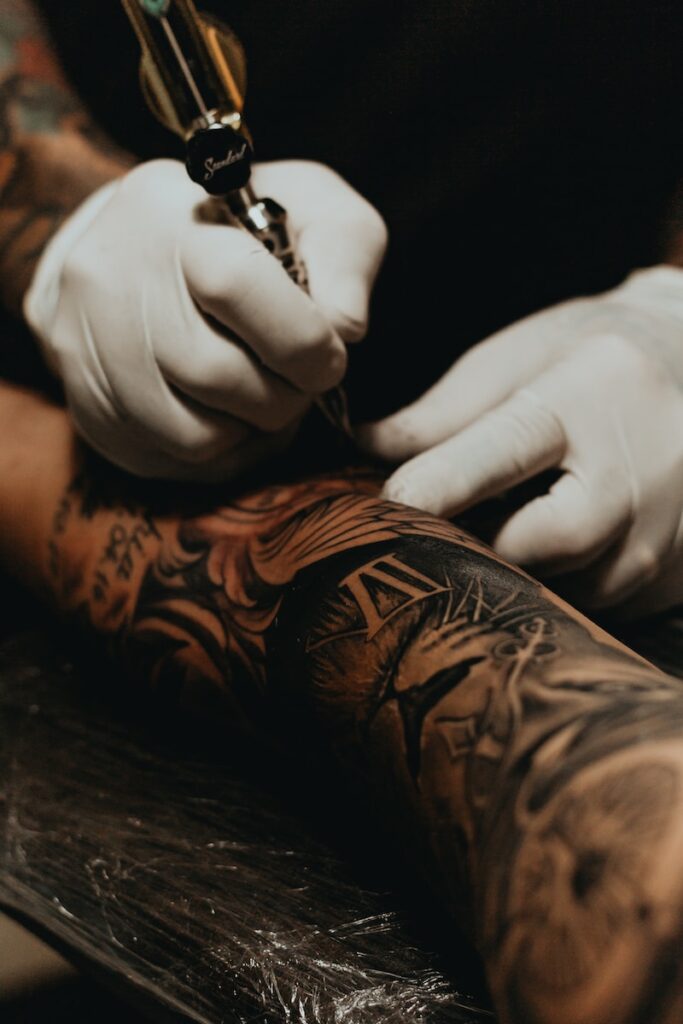
Tattoo Ink
Tattoo ink is a vital component of the tattooing process, providing the colors and pigments that give tattoos their vibrant and eye-catching appearance.
Ingredients in Tattoo Ink
Tattoo ink consists of a combination of ingredients, including pigments, solvents, and carriers. Pigments are responsible for the actual color of the tattoo and are often made from a combination of organic and inorganic compounds. Solvents and carriers help to evenly distribute the pigments and ensure the ink remains fluid during the tattooing process.
Tattoo Ink Colors and Pigments
Tattoo ink comes in a wide array of colors, allowing individuals to choose from a vast palette of options. Common pigment colors include blacks, browns, reds, blues, and yellows. Each color may be derived from different chemical compositions and may have specific properties, such as lightfastness or opacity.
Longevity and Fading of Tattoo Ink
The longevity and fading of tattoo ink depend on several factors, including the quality of the ink, the depth at which it is placed within the dermis, and the individual’s skin type. Generally, well-maintained tattoos can retain their vibrancy for several years, while others may require touch-ups to restore their original appearance. Exposure to sunlight and skincare routines can also impact the longevity and fading of tattoo ink.
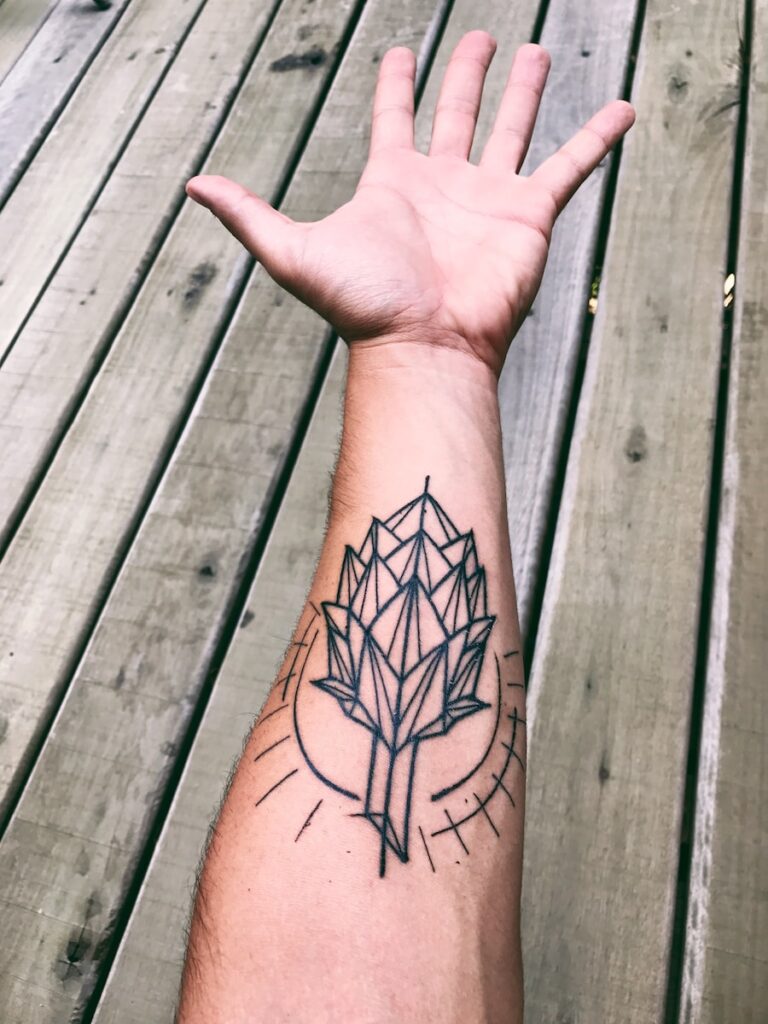
Tattoo Aftercare
Tattoo aftercare is a crucial step in ensuring the proper healing and longevity of a tattoo. Implementing the right aftercare routine can prevent infections, promote healing, and preserve the quality of the tattoo.
Importance of Proper Tattoo Aftercare
Proper tattoo aftercare is essential to prevent infections and complications that could impair the healing process. Following the tattooing procedure, the skin is particularly vulnerable to bacteria and external irritants. By adhering to a strict aftercare routine, such as keeping the tattoo clean and moisturized, individuals can reduce the risk of infections and help the tattoo heal properly.
Tattoo Aftercare Tips and Techniques
Effective tattoo aftercare involves a combination of cleaning, moisturizing, and protecting the tattooed area. Tattoo artists often recommend gently washing the tattoo with mild soap and warm water, followed by the application of a thin layer of ointment or moisturizer. Additionally, individuals should avoid exposing the tattoo to excessive sunlight, swimming pools, or abrasive clothing, as these factors can hinder the healing process.
Common Tattoo Aftercare Mistakes
Sometimes, individuals unknowingly make mistakes during the aftercare process, which can compromise the healing of their tattoos. Some common mistakes include over-moisturizing the tattoo, picking at scabs, and not keeping the tattoo clean. Engaging in these behaviors can lead to infections, scarring, or even the loss of ink, so it is crucial to carefully follow the aftercare instructions provided by the tattoo artist.

Tattoo Removal
While tattoos are considered permanent, advancements in tattoo removal techniques have made it possible to remove or modify unwanted tattoos. Understanding the methods, effectiveness, and risks of tattoo removal is crucial for those considering getting rid of a tattoo.
Methods of Tattoo Removal
Several methods of tattoo removal exist, including laser tattoo removal, surgical excision, and dermabrasion. Laser tattoo removal is the most commonly used method and involves using laser technology to break down the tattoo ink particles, allowing the body’s immune system to eliminate them over time. Surgical excision involves physically removing the tattooed skin, while dermabrasion uses a rotating brush to remove the upper layers of the skin, carrying away the tattoo ink.
Effectiveness and Risks of Tattoo Removal
The effectiveness of tattoo removal varies depending on factors such as tattoo size, color, location, and individual skin characteristics. Laser tattoo removal is generally the most effective method, but it may require multiple sessions to achieve satisfactory results. Risks associated with tattoo removal include changes in skin texture, scarring, skin pigmentation issues, and potential allergic reactions to the removal process.
Covering Up Tattoos
If tattoo removal is not an option, another alternative is to cover up the unwanted tattoo with a new design. Skilled tattoo artists can work with individuals to create a cover-up design that effectively conceals the old tattoo. However, not all tattoos are suitable for cover-ups, and it is essential to consult with an experienced artist to determine the feasibility and best approach for covering up an existing tattoo.
Tattoo Safety and Health Risks
Ensuring tattoo safety and minimizing health risks is of utmost importance in the tattooing industry. Tattoo studios must adhere to strict sterilization and hygiene practices to protect the health and well-being of their clients.
Sterilization and Hygiene in Tattoo Studios
Tattoo studios must maintain high standards of sterilization and hygiene to prevent the transmission of infectious diseases such as hepatitis and HIV. This includes utilizing disposable needles, sterilizing equipment, and maintaining a clean and sanitized environment. Tattoo artists should also practice proper hand hygiene, wear gloves during the tattooing process, and follow appropriate disposal procedures for used materials and sharps.
Potential Health Risks of Tattoos
While tattooing is generally safe when performed by licensed professionals in clean environments, there are potential health risks associated with the practice. Allergic reactions to tattoo ink, skin infections, bloodborne diseases, and granulomas (small nodules that form around tattoo ink) are some examples of possible complications. It is important for individuals to research reputable tattoo studios, ask questions, and ensure that they are making an informed decision before getting a tattoo.
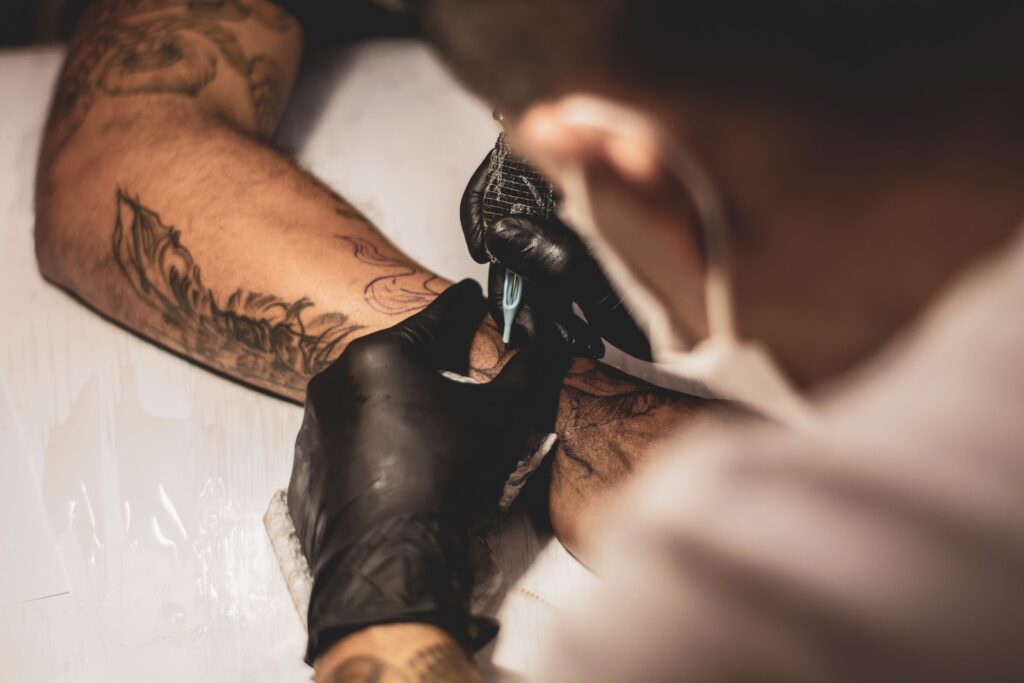
Cultural and Symbolic Meanings of Tattoos
Tattoos hold deep cultural and symbolic meanings in various societies around the world. They serve as a form of personal expression, cultural identification, and can carry significant emotional and spiritual weight.
Tattoos in Different Cultures
Tattoos have been a part of cultural traditions in civilizations spanning the globe. In Japan, traditional Irezumi tattoos are associated with spirituality, protection, and social status. The Maori people of New Zealand traditionally adorned themselves with intricate tattoos, known as ta moko, to signify identity, lineage, and social status. In Polynesian cultures, tattoos symbolize power, bravery, and important life events.
Symbolism and Personal Expression through Tattoos
Tattoos can hold deeply personal and symbolic meanings for individuals, allowing them to express aspects of their identity, experiences, or beliefs. Symbols such as anchors representing stability, birds representing freedom, or roses representing love may be used to convey specific messages. Tattoos can also serve as visual reminders of significant life events, relationships, or personal milestones, creating a lasting connection between the individual and their tattoo.
Tattoo Trends and Popularity
Tattoos have experienced a surge in popularity in recent decades, influenced by various factors ranging from celebrity culture to advancements in tattooing techniques.
Popular Tattoo Designs and Themes
Tattoo designs and themes reflect the ever-changing tastes and preferences of the individuals who choose to get tattooed. Current popular designs include minimalist tattoos, geometric patterns, nature-inspired motifs, and intricate mandalas. Additionally, tattoos featuring meaningful quotes or phrases, musical symbols, or portraits of loved ones are also in high demand.

Influences on Tattoo Trends
Tattoo trends are often influenced by various factors, including popular culture, fashion, and social media. Celebrities who showcase their tattoos publicly often influence the choices of their fans. Additionally, renowned tattoo artists and their unique styles can set new trends in the industry. Advances in technology, such as improved tattooing equipment and techniques, have also played a role in expanding the possibilities and popularity of tattoos.
Tattooing as an Industry
The tattoo industry has evolved into a thriving and influential sector, with its own economic impact and vibrant community.
Economic Impact of the Tattoo Industry
The tattoo industry generates significant economic revenue worldwide, encompassing tattoo studios, tattoo artists, suppliers, and related businesses. The demand for tattoos has led to the growth of specialized tattoo equipment manufacturers, tattoo ink suppliers, and aftercare product producers. Tattoo studios and artists contribute to local economies, attracting customers and tourists who support surrounding businesses.
Tattoo Conventions and Events
Tattoo conventions and events provide a platform for tattoo artists, enthusiasts, and industry professionals to come together and celebrate the art of tattooing. These events showcase the incredible talent within the industry, allowing artists to connect with potential clients and fellow artists. Tattoo conventions often feature live tattooing, art exhibitions, seminars, and competitions, providing a unique experience for both artists and attendees.
In conclusion, the art of tattooing is a fascinating world rooted in history, culture, and personal expression. From the ancient traditions of tattooing to modern tattoo trends, the industry has seen significant evolution. Understanding the anatomy of a tattoo, the importance of proper aftercare, and the potential risks involved are all crucial aspects for anyone considering getting a tattoo. Whether chosen for cultural significance, personal symbolism, or pure artistry, tattoos continue to be a powerful form of self-expression and a thriving industry that captivates individuals around the globe.


